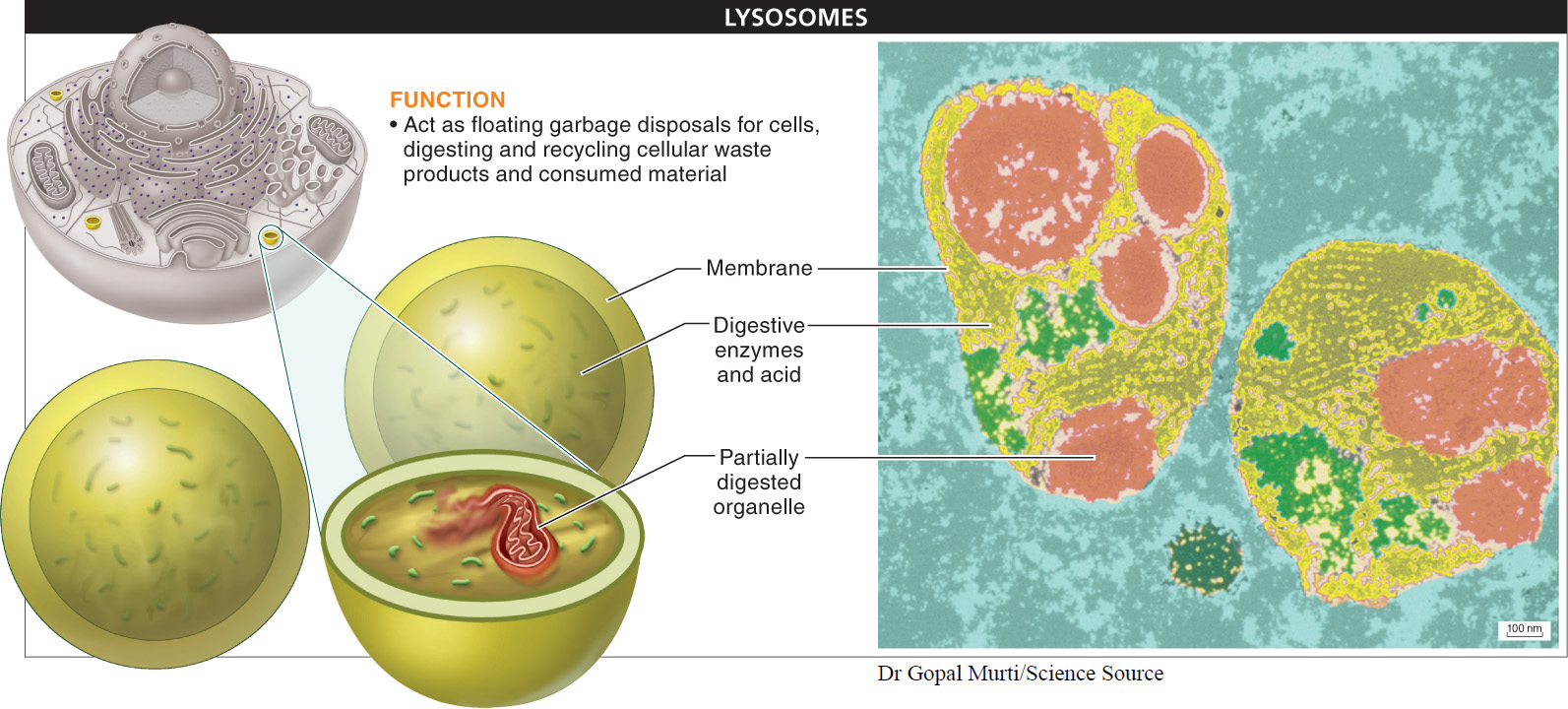3.17: Lysosomes are the cell’s garbage disposals.
Garbage. What does a cell do with all the garbage it generates? Mitochondria wear out after about 10 days of intensive activity, for starters. And white blood cells constantly track down and consume bacterial invaders, which they then have to dispose of. Similarly, the thousands of ongoing reactions of cellular metabolism produce many waste macromolecules that cells must digest and recycle. Many eukaryotic cells deal with this garbage by maintaining hundreds of versatile floating “garbage disposals” called lysosomes (FIGURE 3-33).

Lysosomes are round, membrane-
Some of the enzymes break down lipids, others carbohydrates, others proteins, and still others nucleic acids. Consequently, when a cell consumes a particle of food or even an invading bacterium via phagocytosis, the cell directs the material to lysosomes for dismantling. And, ever the efficient system, the cell releases most of the component parts of molecules that are digested, such as the amino acids from proteins, back into its cytoplasm, where they can be reused by the cell as raw materials.
119
Some immune system cells tend to have particularly large numbers of lysosomes, most likely because of their great need for disposing of the by-
With 50 different enzymes necessary for lysosomes to carry out their metabolic salvaging act, malfunctions sometimes occur. In a common genetic disorder called Tay-
Although the matter has long been debated among biologists, it does seem that plant cells also contain lysosomes, compartments with similar digestive broths that carry out the same digestive processes as in animals.
TAKE-HOME MESSAGE 3.17
Lysosomes are round, membrane-
What is the fate of a bacterium engulfed by a white blood cell through phagocytosis?
120